England’s ancient cathedrals are in serious financial trouble, so much so that there is talk of some of them closing their doors (and being allowed to fall down?). The crisis is such that a Cathedrals Working Group has been set up to review the governance and financial management of the nation’s 42 Anglican cathedrals. Huge, complex, and old buildings are, of course, very expensive to maintain, and deans and other clerics are not necessarily good with money. Indeed, there have been Trollopian scandals at several cathedrals in recent years, with accusations of financial mismanagement and sudden resignations from the chapters at Lincoln, Peterborough, and Exeter (at York, however, the bitter row has been about bell-ringing).
There is nothing new about our cathedrals being in financial or structural trouble (or in both). Historically, some have been well endowed while others have had to struggle. Some suffered from damage during the Civil War (Lichfield) while others were simply neglected during the complacent, indifferent Georgian century. The west tower of Hereford Cathedral collapsed in 1786, bringing down part of the nave as well. And in 1861 the central tower and spire at Chichester crumbled into rubble following years of neglect and the ill-advised intervention of an incompetent engineer. Much worse, however, was perpetrated by the fashionable vandal, the architect James Wyatt, who tore down the detached bell tower at Salisbury and would have removed the Galilee porch at Durham to make way for a carriage drive for the bishop. In these cases, perhaps, the cathedrals had too much money rather than too little.
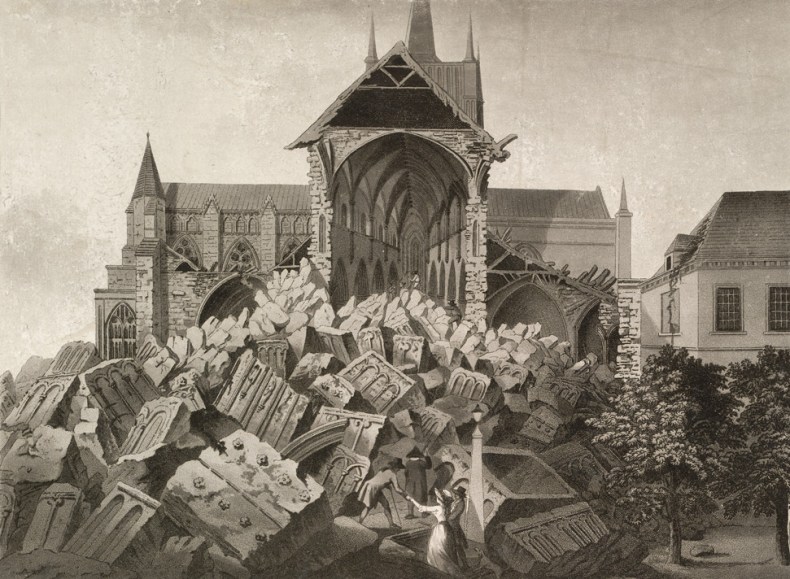
View of the Ruins of the West Tower of Hereford Cathedral (1788), I. Wathen
‘The western towers had sunk dreadfully, and were split from top to bottom on three sides (if not four). The cracks were nearly a foot wide […] The danger was terrific.’ So wrote Sir Gilbert Scott about his restoration work at Ripon. ‘I do not covet such work – one sleeps more quietly without it.’ It was the unfairly maligned Scott who rebuilt the crossing tower and spire at Chichester, and probably prevented that at Salisbury from collapsing. It is still too little appreciated how Scott – who was involved with a majority of the ancient cathedrals of England and Wales – and other Victorian restorers rescued medieval buildings and made sure they were in a sound condition for the following century or so.
Such restorations were very expensive, but they were possible because the Gothic Revival went hand in hand with the Victorian age of faith and the revival of the Church of England. In consequence, there was much enthusiasm (as well as controversy) surrounding these restorations, which were entirely funded by private donations over and above the dioceses’ historic endowments. The state did not contribute. Today, the situation is rather different, and although cathedrals are, on one level, doing well – attracting large congregations for services, unlike so many parish churches – there is not the money around that there once was. And still the state does not contribute – except via grants from the Heritage Lottery Fund. In France, in contrast, as in many European countries, the state owns and looks after these incomparable buildings.
The ancient cathedrals of England are among our nation’s principal glories, too often taken for granted. And they are very, very expensive to maintain. Some, understandably, charge for entry; others still do not. Durham Cathedral does not charge and now has an annual deficit of half a million pounds. It attracts 750,000 visitors a year, who contribute £150,000 – which covers the running costs of this wonderful building for just over two weeks. Over the next couple of decades, it is faced with an estimated £40 million worth of repairs. Something, clearly, has to give. But a British government that is busy closing libraries and cutting heritage grants, let alone running down essential social services, is not likely to take on the maintenance of 42 cathedrals (and then there are the Catholic ones: not so ancient, but still of great interest…).
Oddly enough, the cathedral whose financial predicament has attracted the most publicity is not a centuries-old pile, with crumbling stonework, exposed flying buttresses and pinnacles, and delicate window tracery filled with fragile stained-glass, but a modern brick-faced structure in stripped gothic. Guildford Cathedral, high above the county-town of well-heeled Surrey, was won in competition by Edward Maufe in 1932 and consecrated in 1961. In recent years the Heritage Lottery Fund helped with expensive repairs involving the stripping out of asbestos. To secure the cathedral’s future, it was proposed to sell adjacent land to a bog-standard house-builder to create an endowment fund of a mere £10 million. But the plan to build 134 homes on this land, although backed by planning officers, was turned down this year by the council because of local opposition. The Bishop of Guildford had said that ‘Without this planning permission there will be no endowment, no investment income and possibly no cathedral’ and that the cathedral’s doors could close.
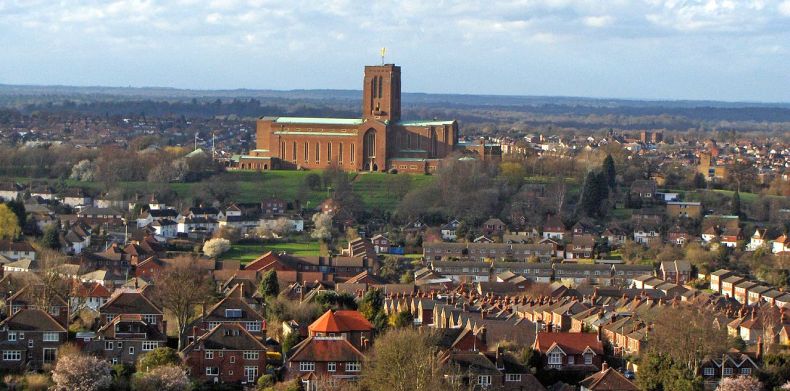
Guildford Cathedral on Stags Hill, Guildford, Surrey
But was it a good scheme? To sell an asset to bring in less money than the developer would have made was surely ill-advised, and the failure also suggests poor relations with the local community. Guildford Cathedral could do with high-quality housing on its exposed site on the top of Stag Hill. So why not employ a good architect and planner, and develop its own land by itself? What needs to be emphasised is that this cathedral, though modern, is still a building of distinction and power, that enhances and belongs to the city in which it stands. Perhaps then both goodwill and money might flow in its direction.
The essential problem will remain, however, in Guildford as in Carlisle, that the established Church is expected to look after its architectural treasures all by itself. Perhaps it needs to demonstrate that these great buildings belong to us all. England without Salisbury Cathedral, or Ely, or Lincoln, or Gloucester is unthinkable. But we must learn that we all must pay for them.
Unlimited access from just $16 every 3 months
Subscribe to get unlimited and exclusive access to the top art stories, interviews and exhibition reviews.

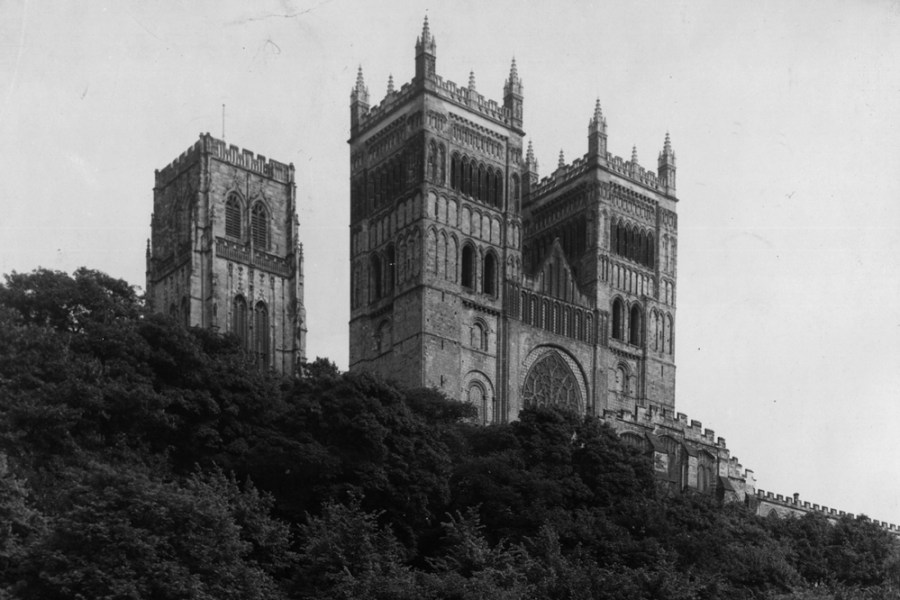
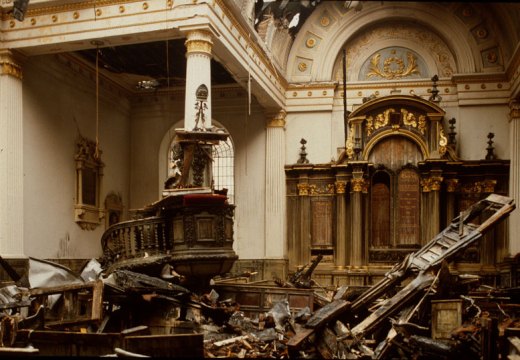
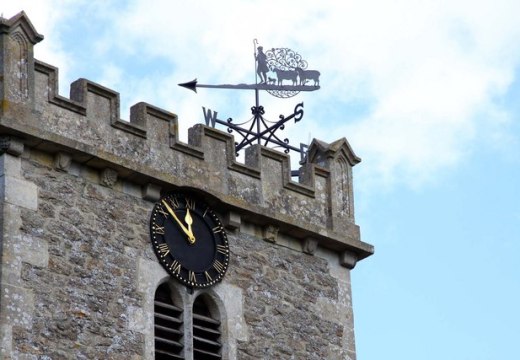
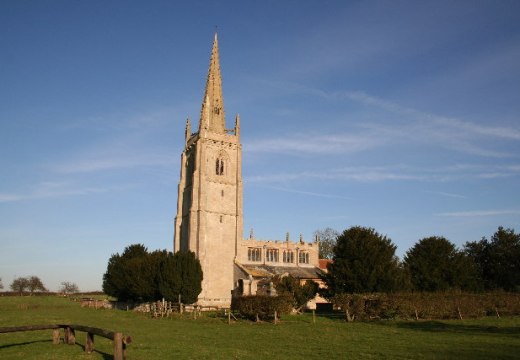









![Masterpiece [Re]discovery 2022. Photo: Ben Fisher Photography, courtesy of Masterpiece London](http://www.apollo-magazine.com/wp-content/uploads/2022/07/MPL2022_4263.jpg)
It’s time for the government of London to return to its rightful home